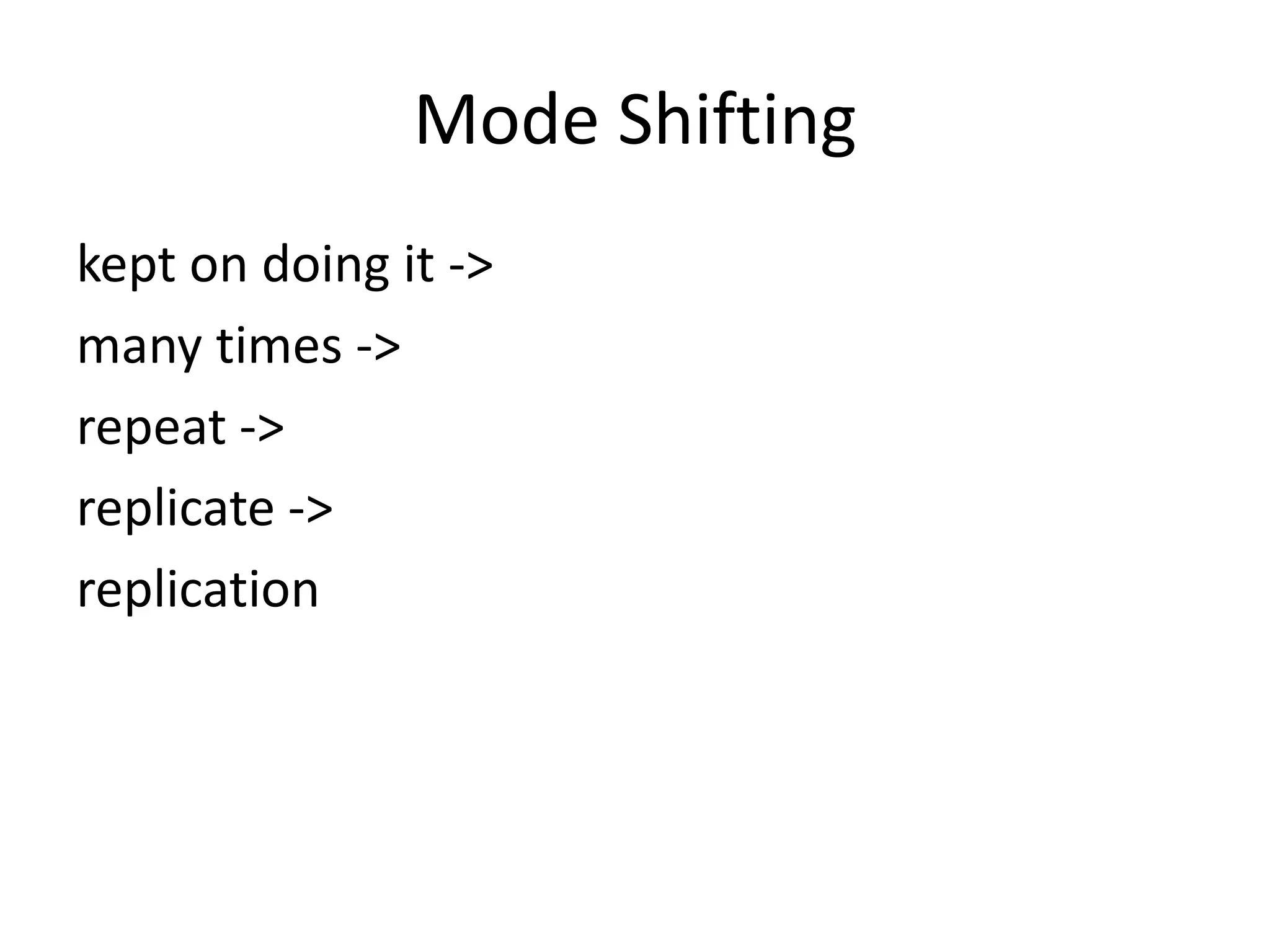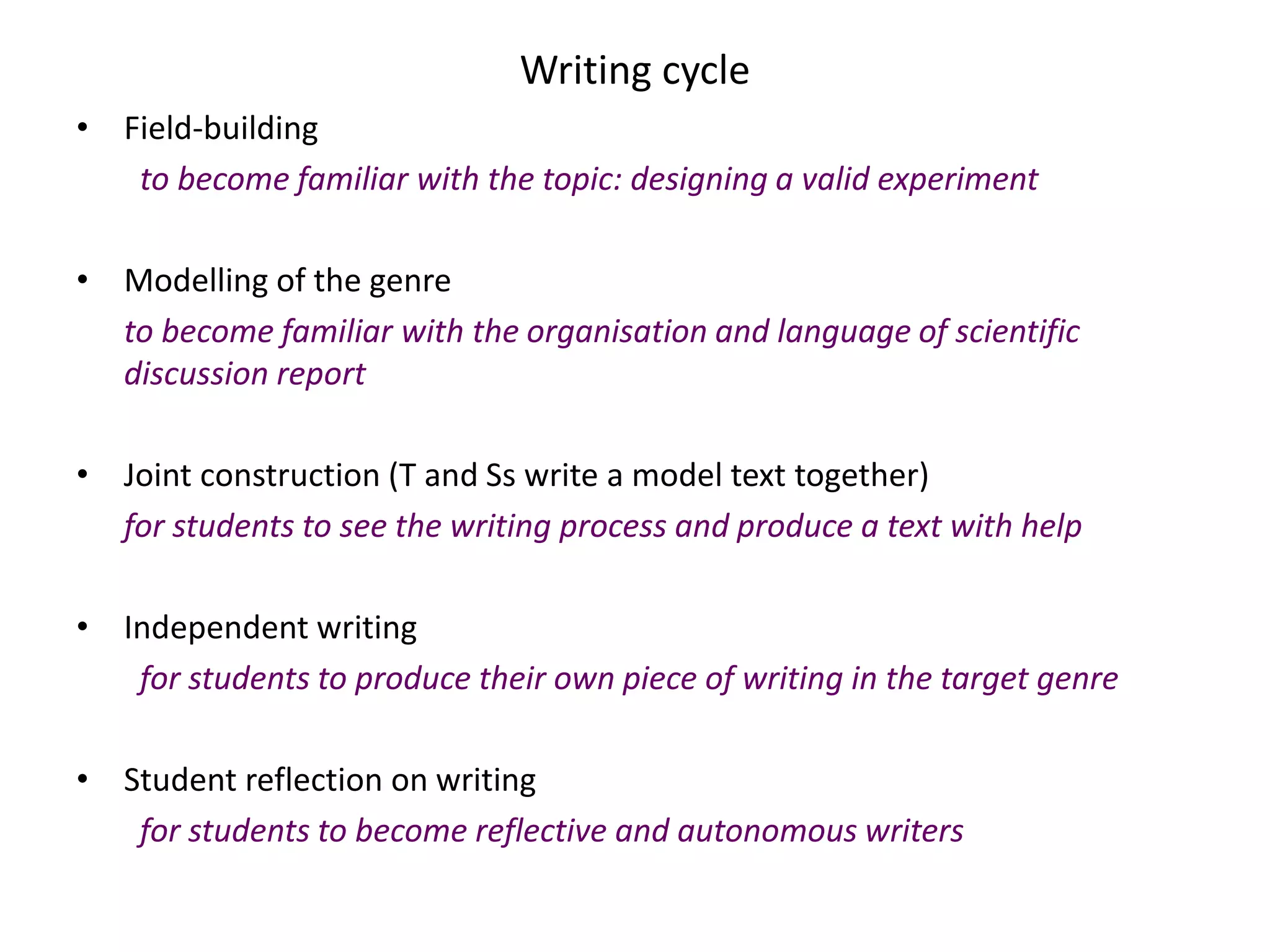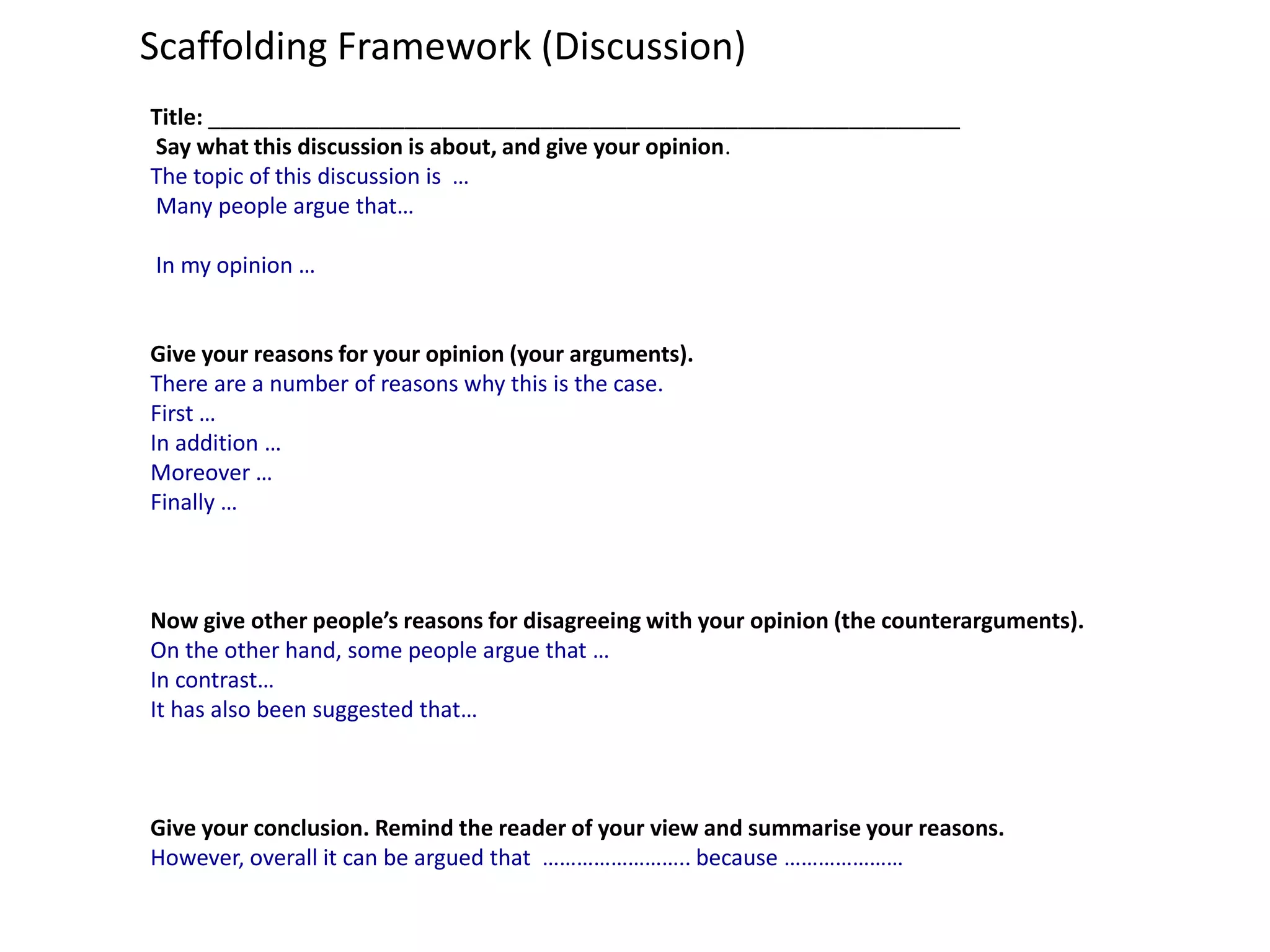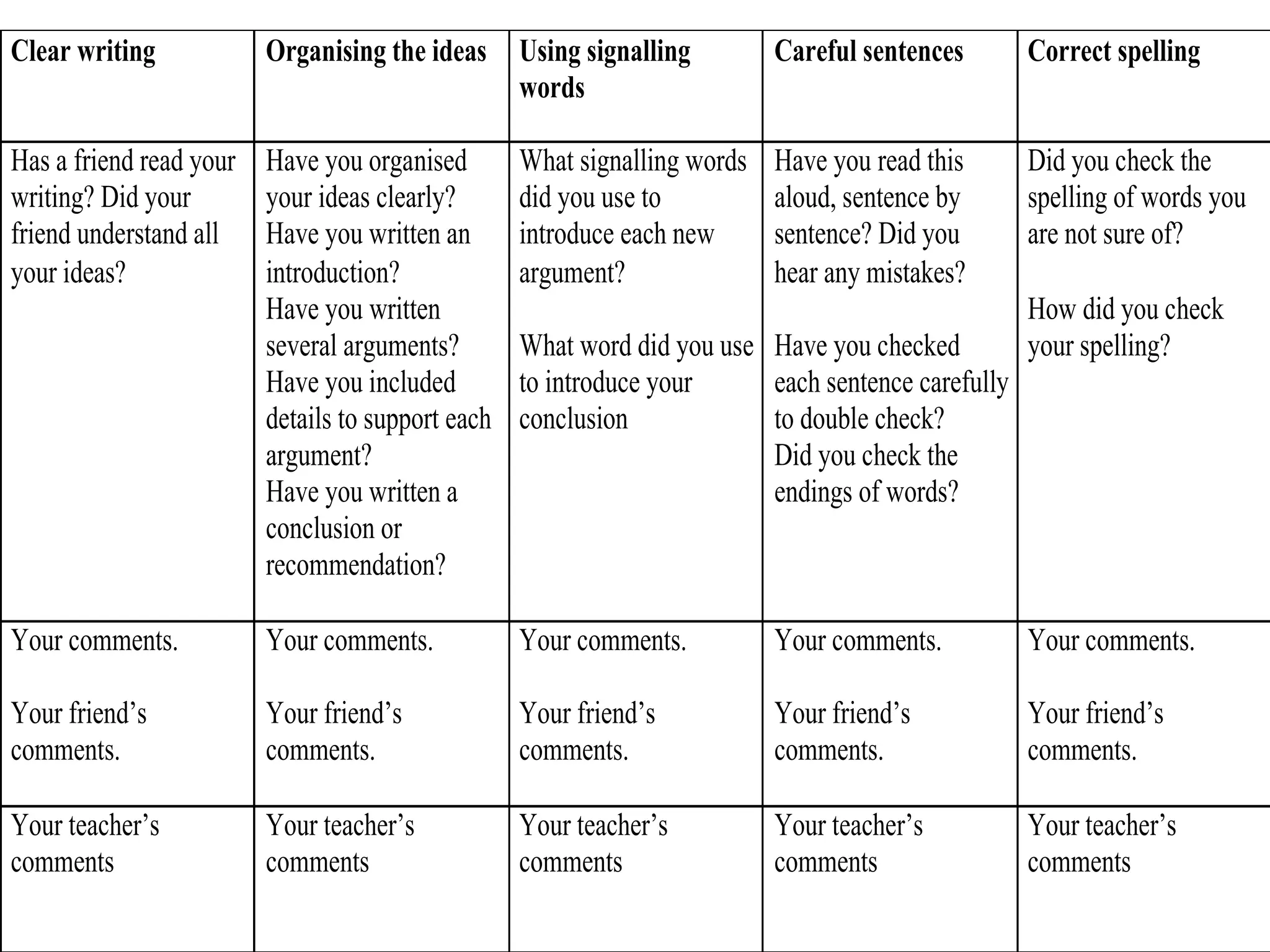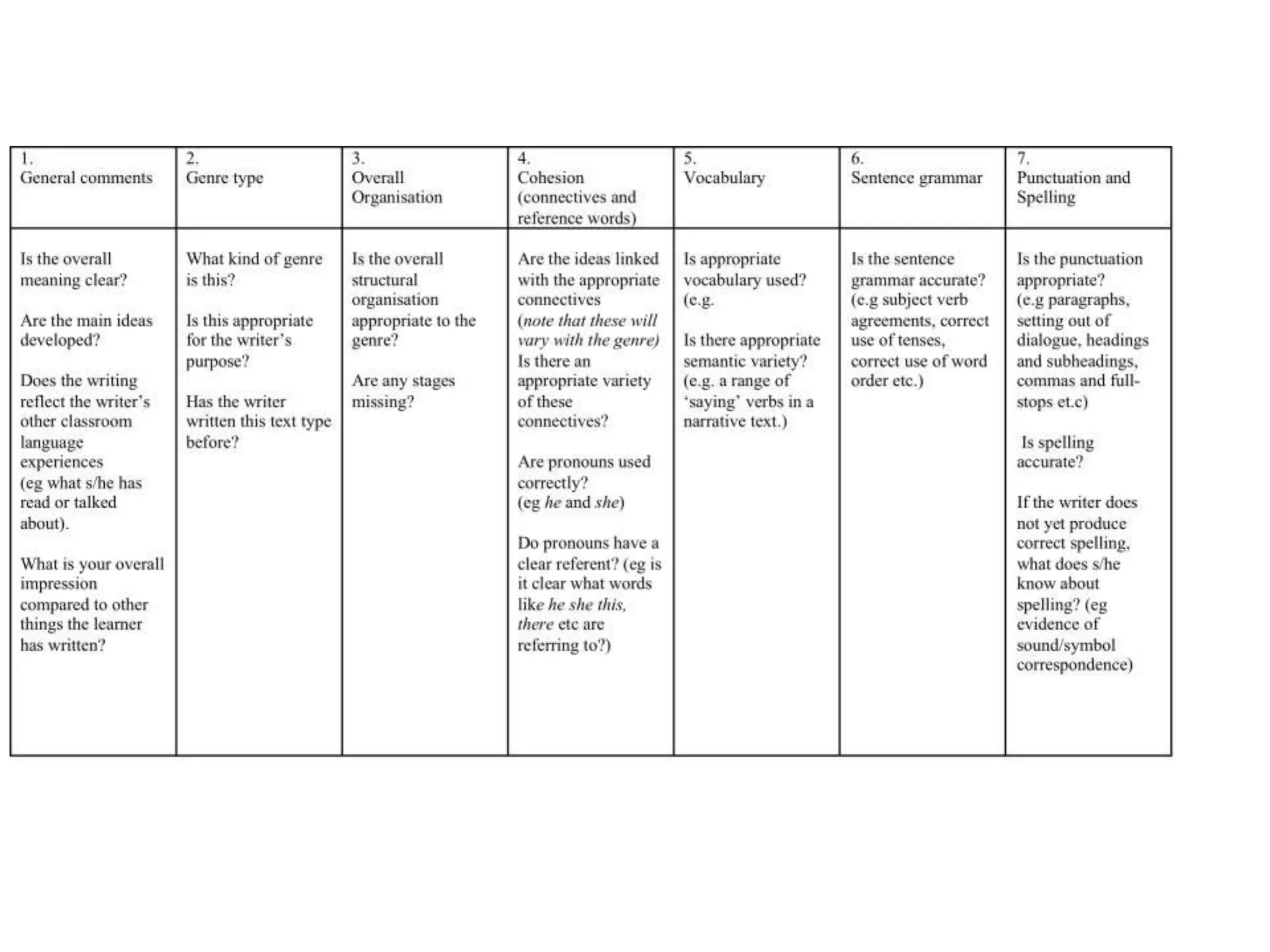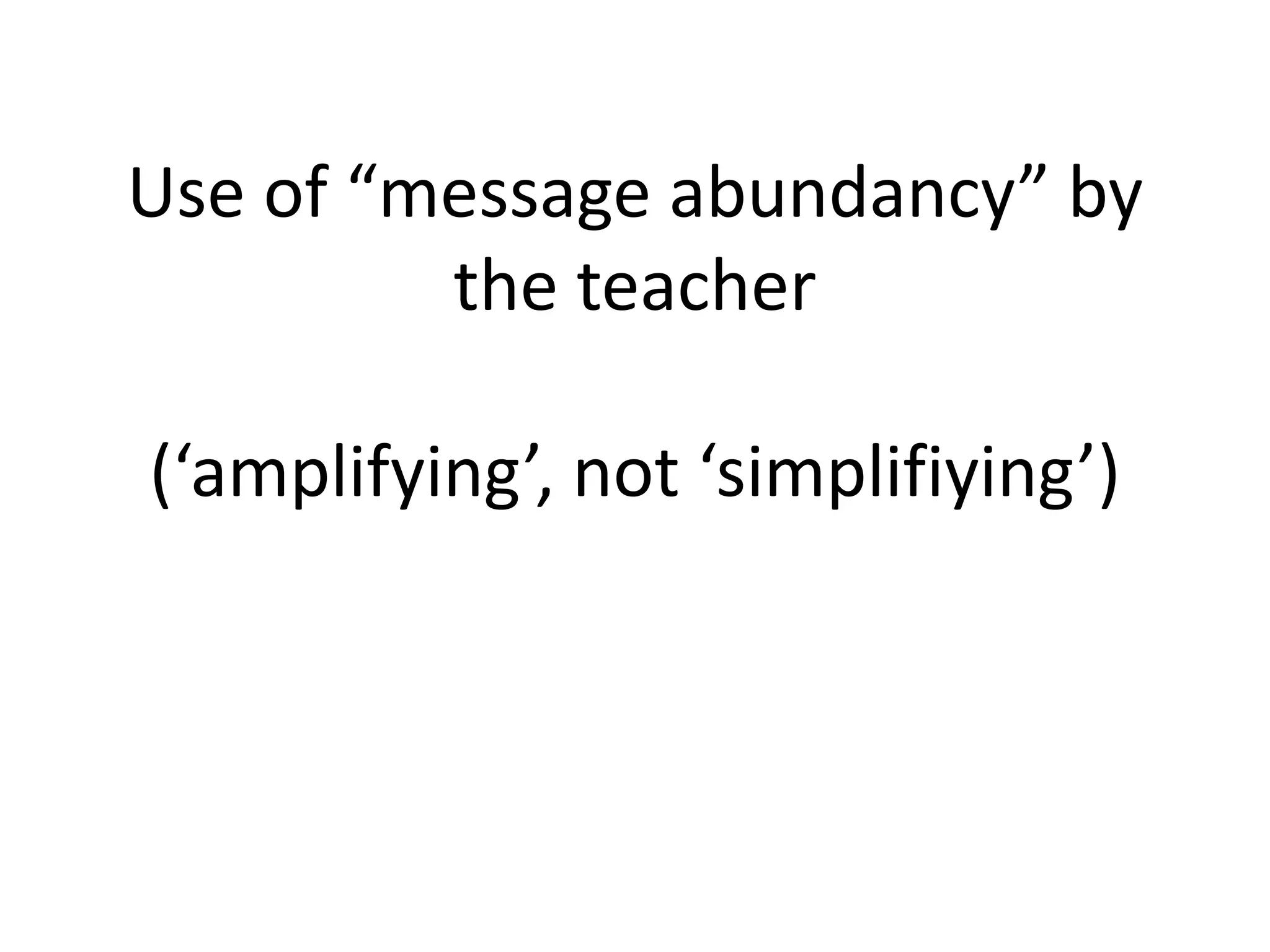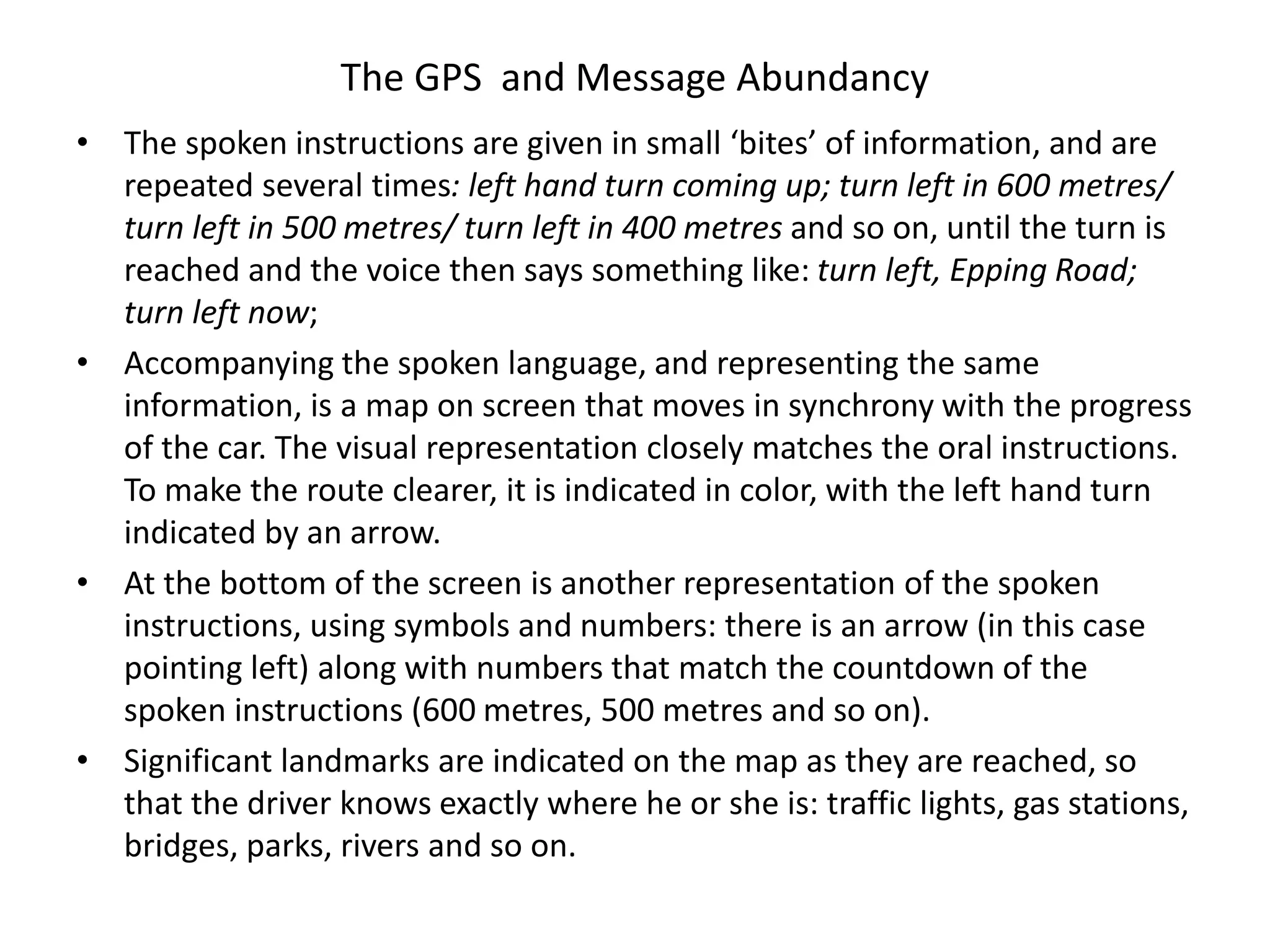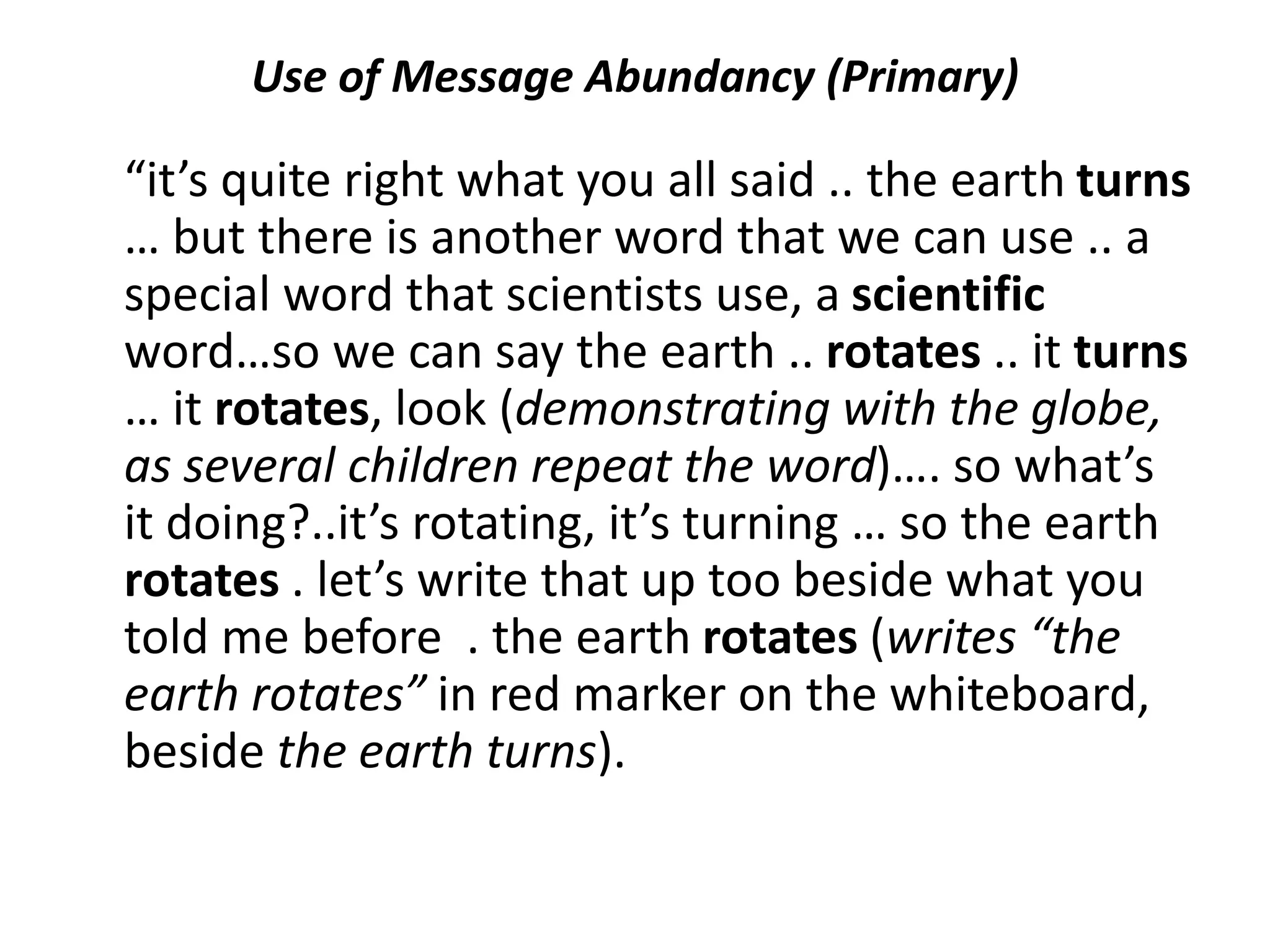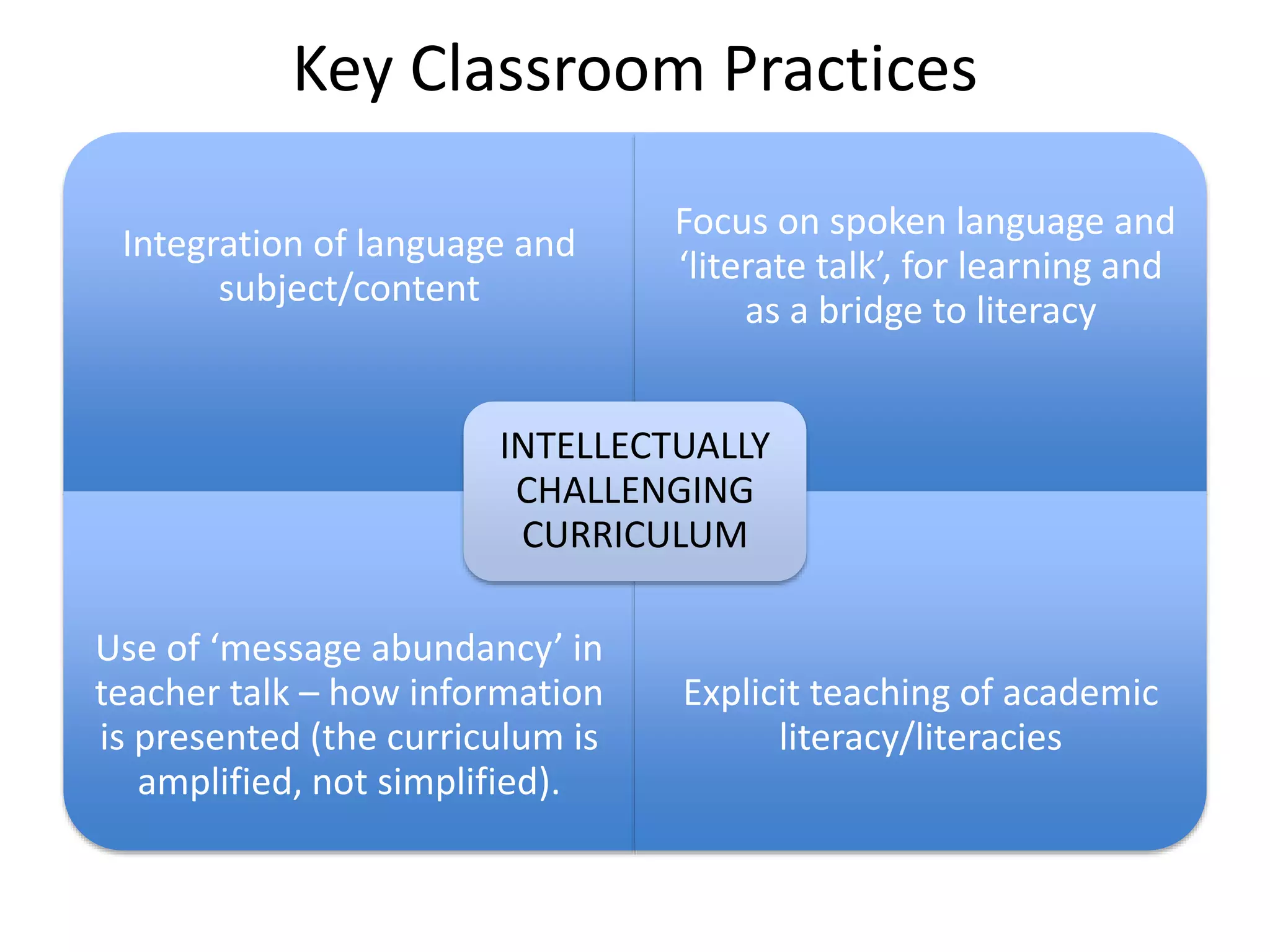The document discusses the concept of scaffolding in language teaching, defining it as temporary support that helps learners acquire new skills and eventual autonomy in tasks. It emphasizes the importance of integrating challenging curricula and explicit academic literacy instruction for engaging students from diverse backgrounds. Various strategies, such as collaborative learning, planned scaffolding, and the use of 'message abundancy' are suggested to enhance language development in classrooms.

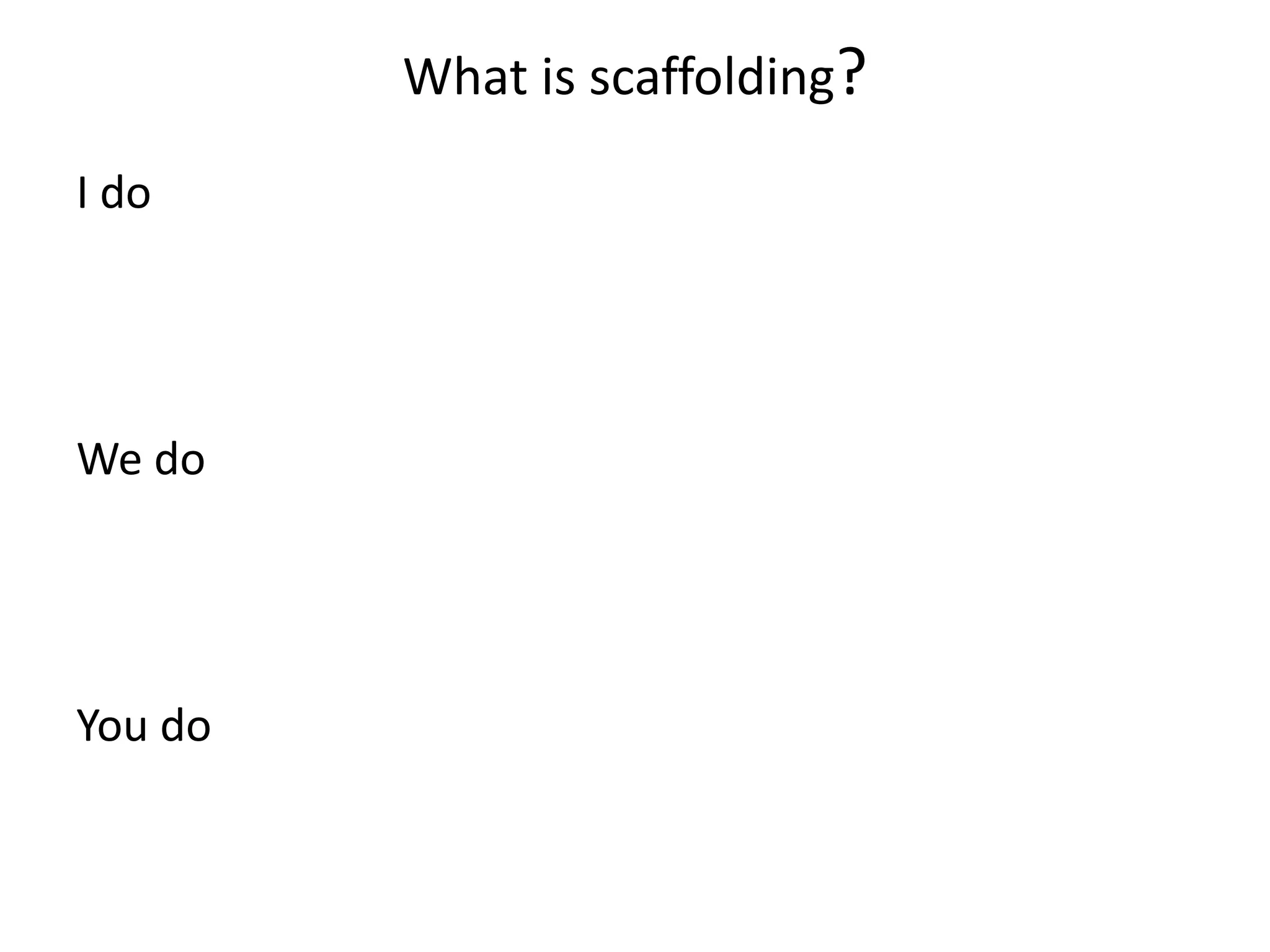
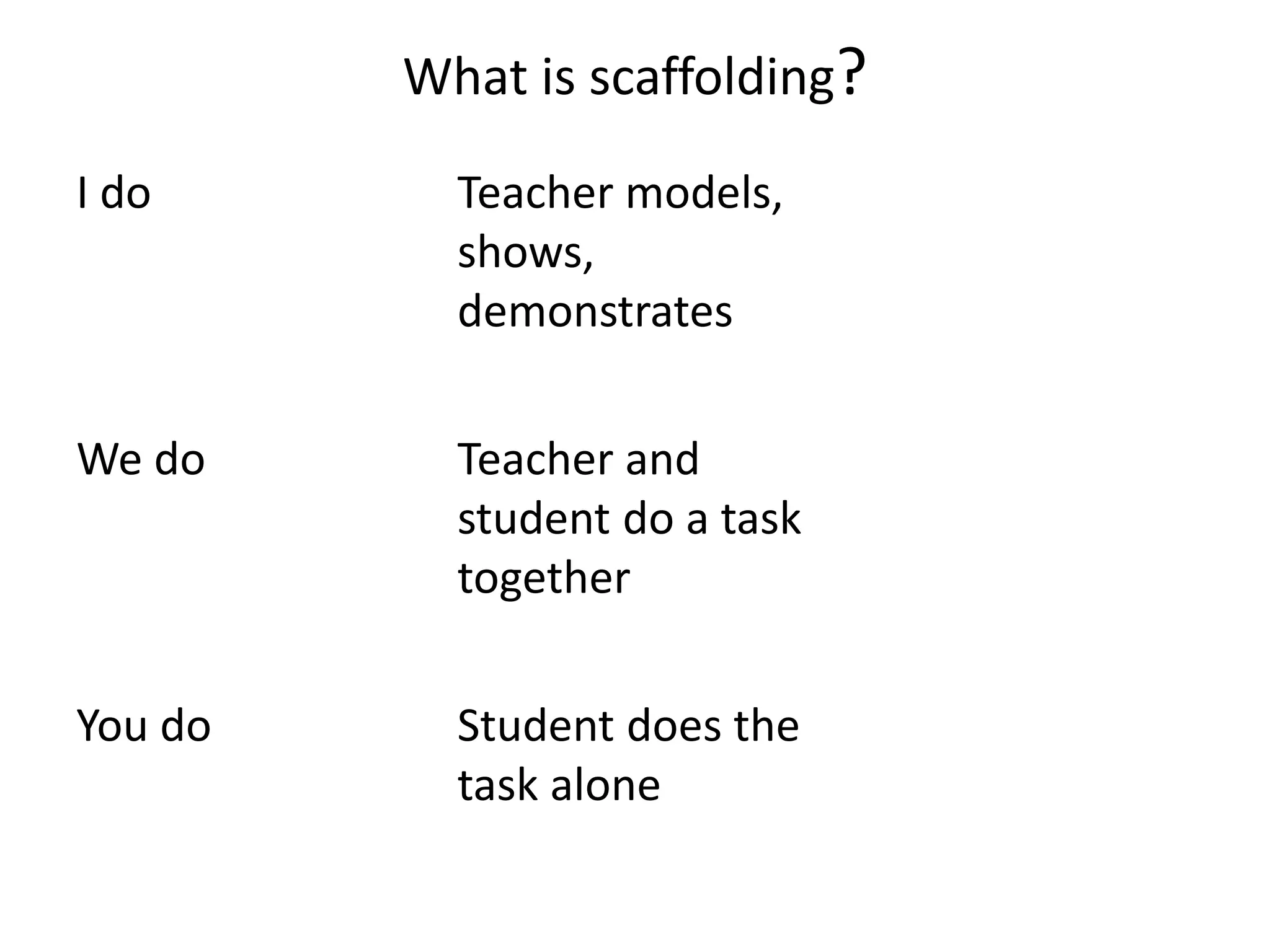
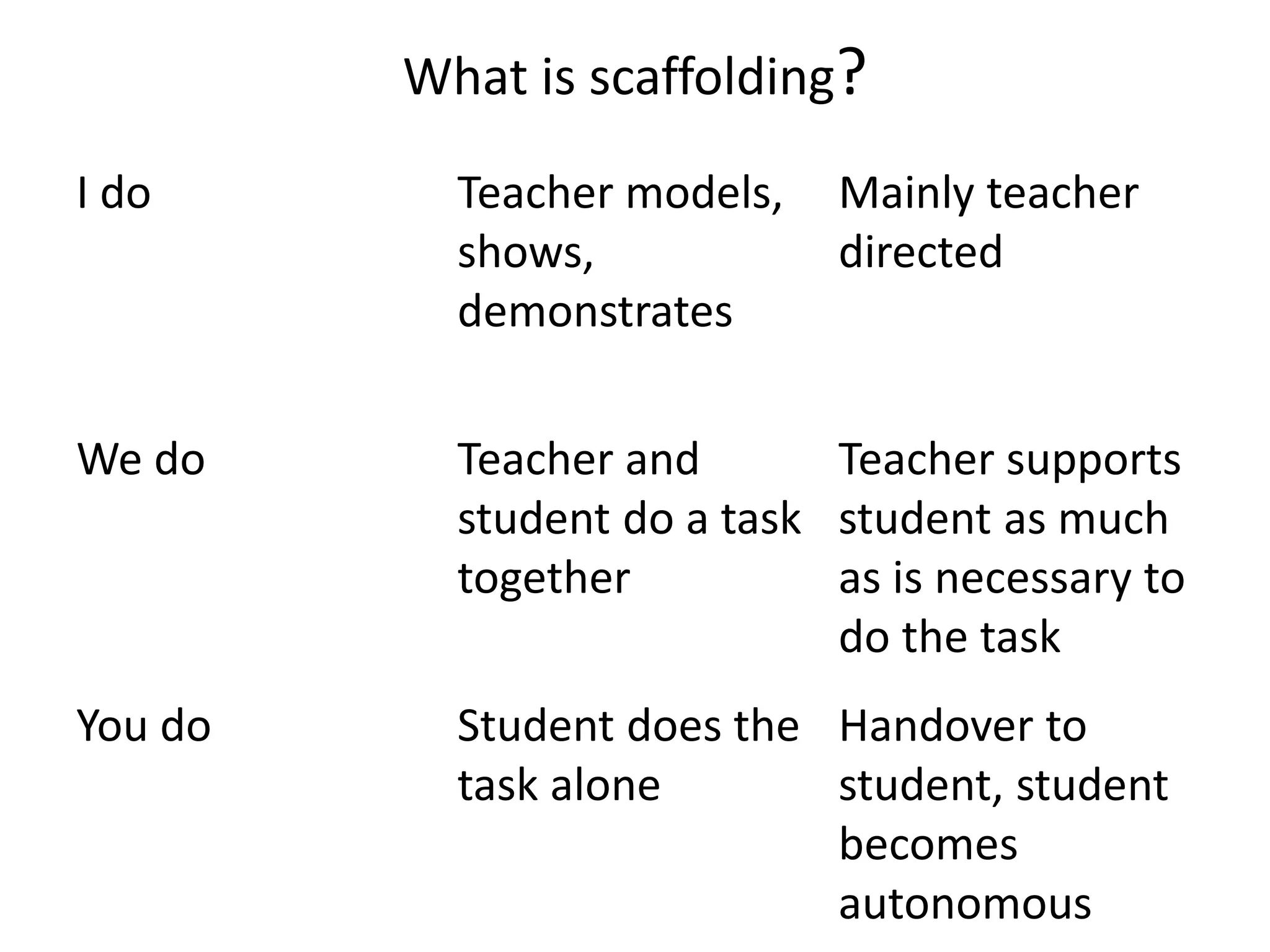

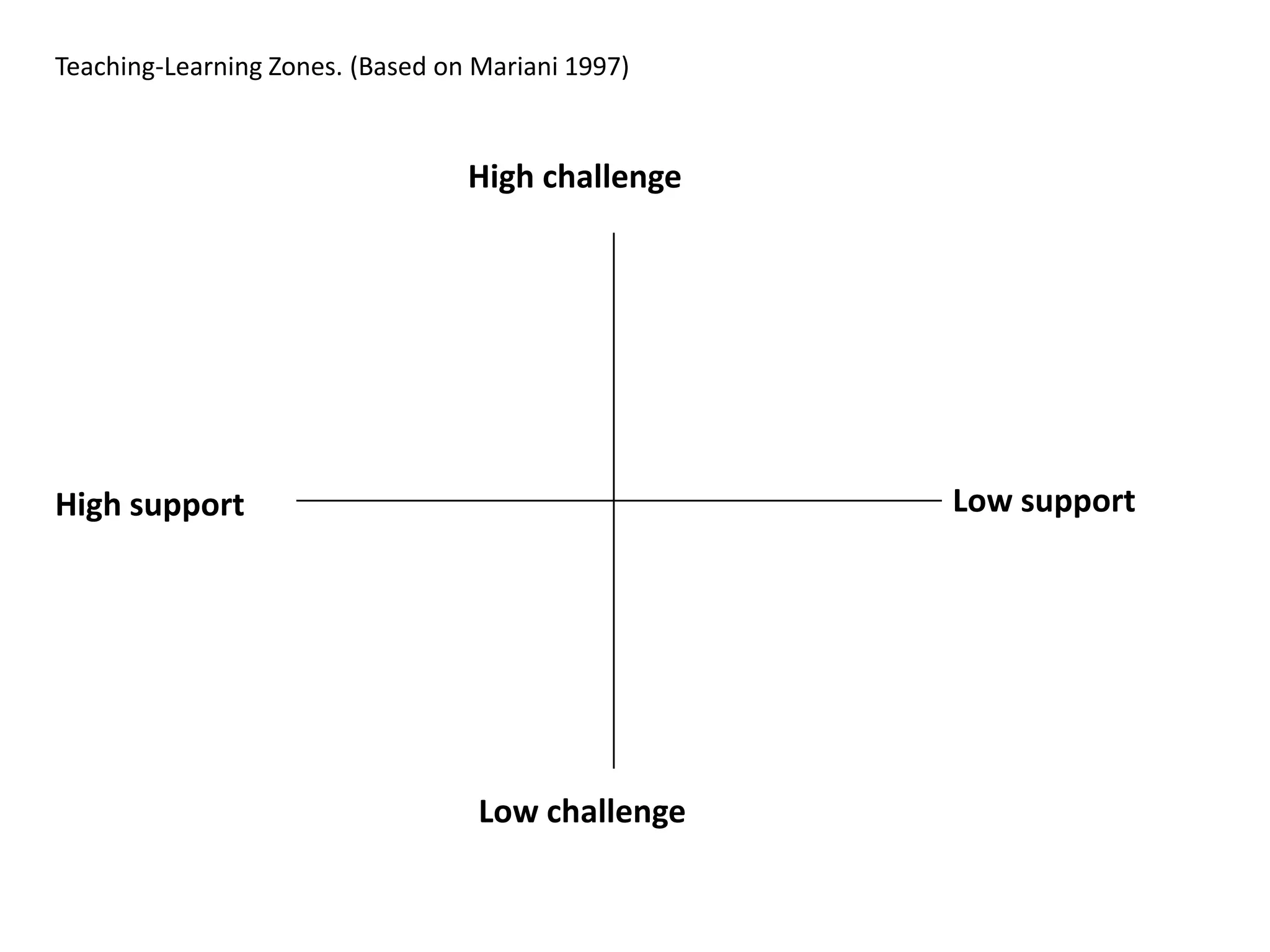
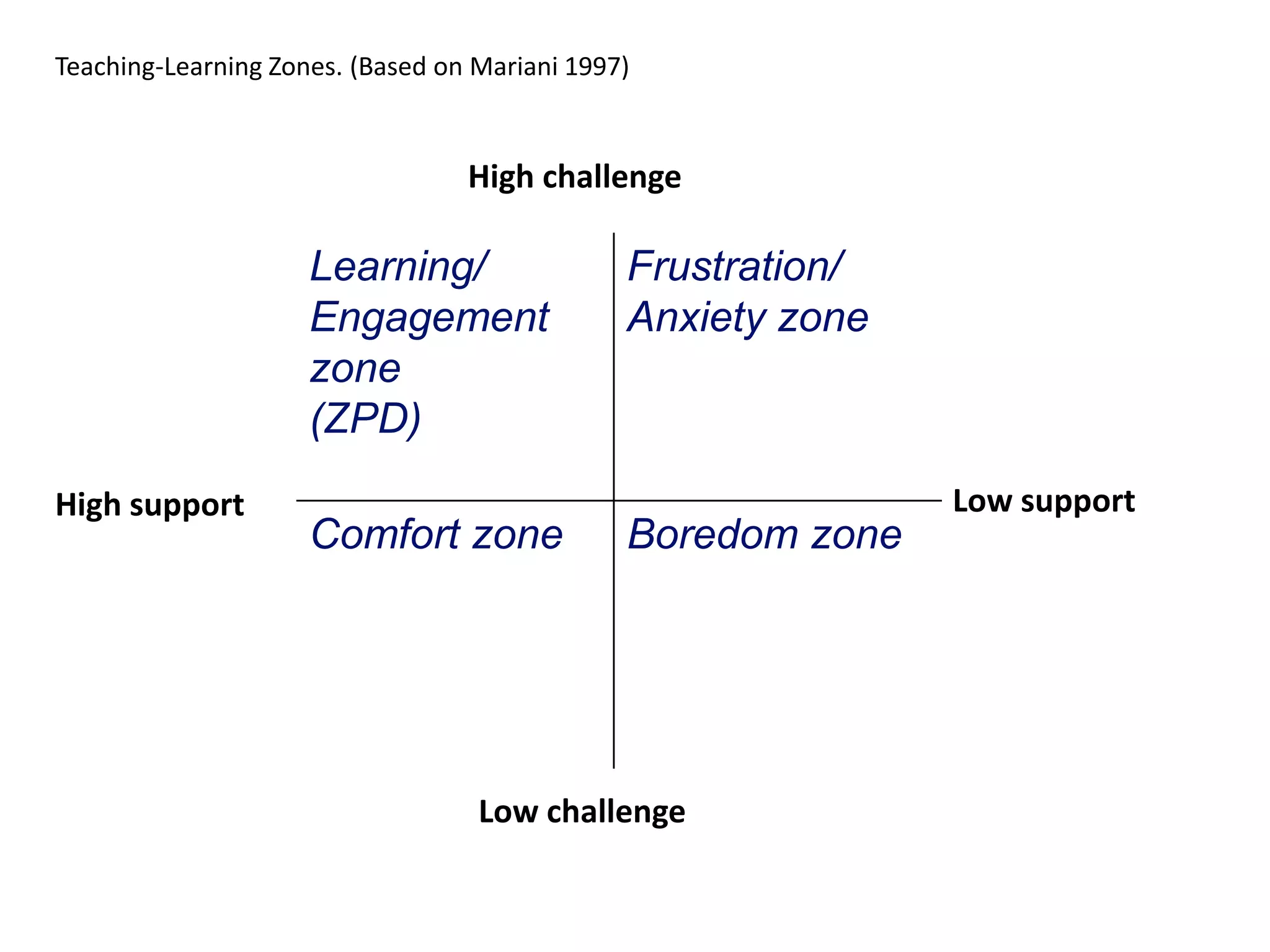
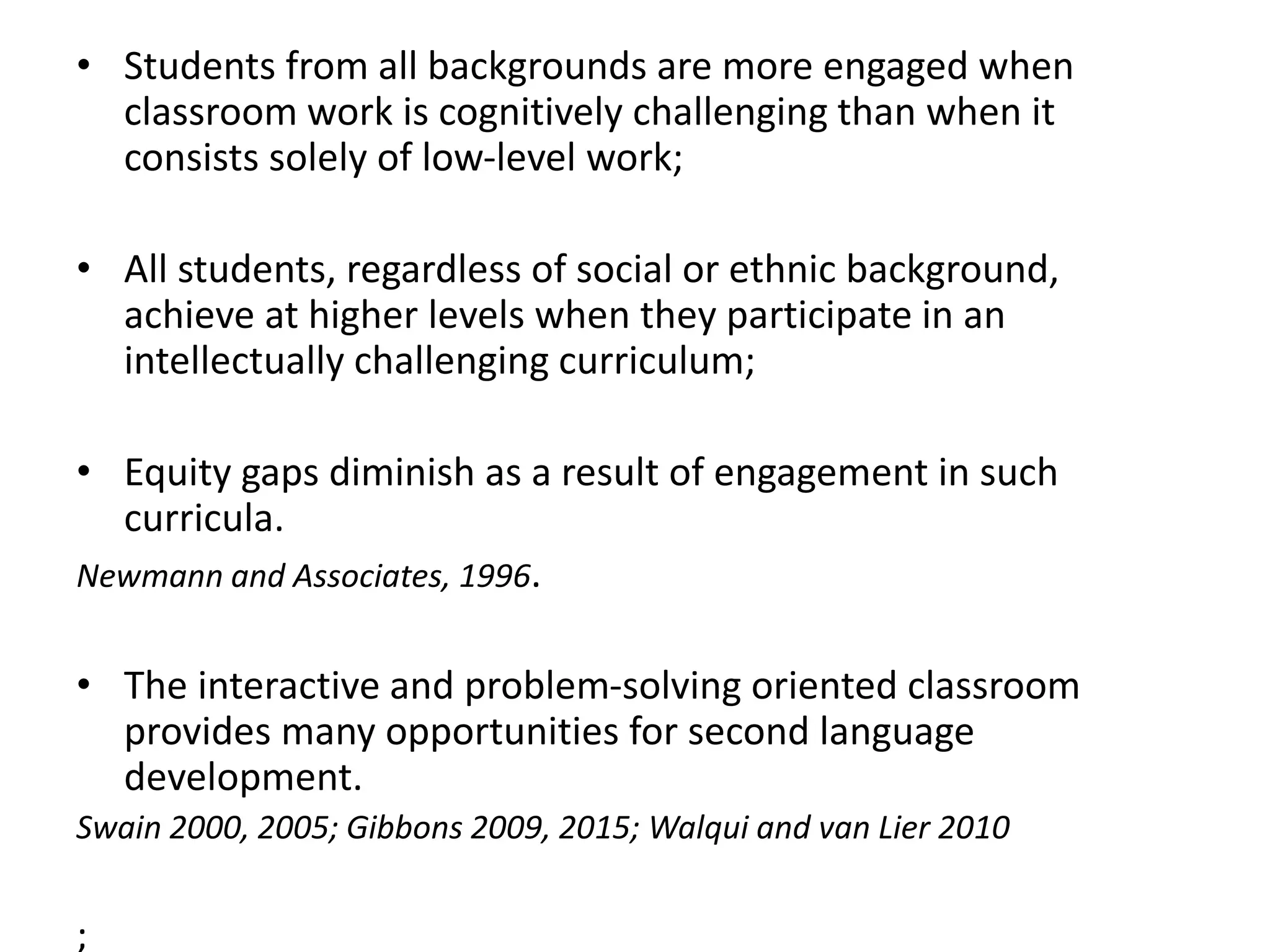
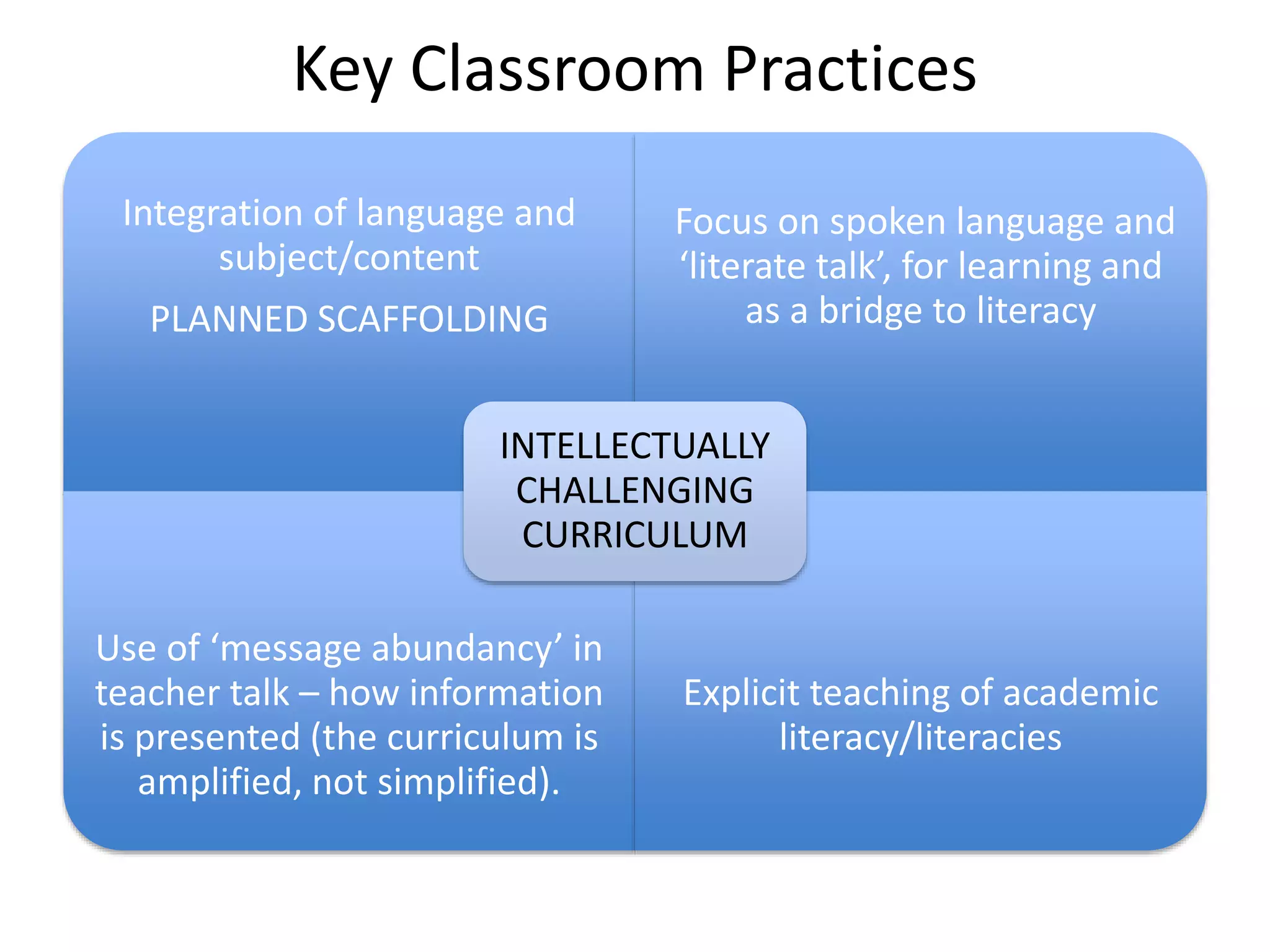


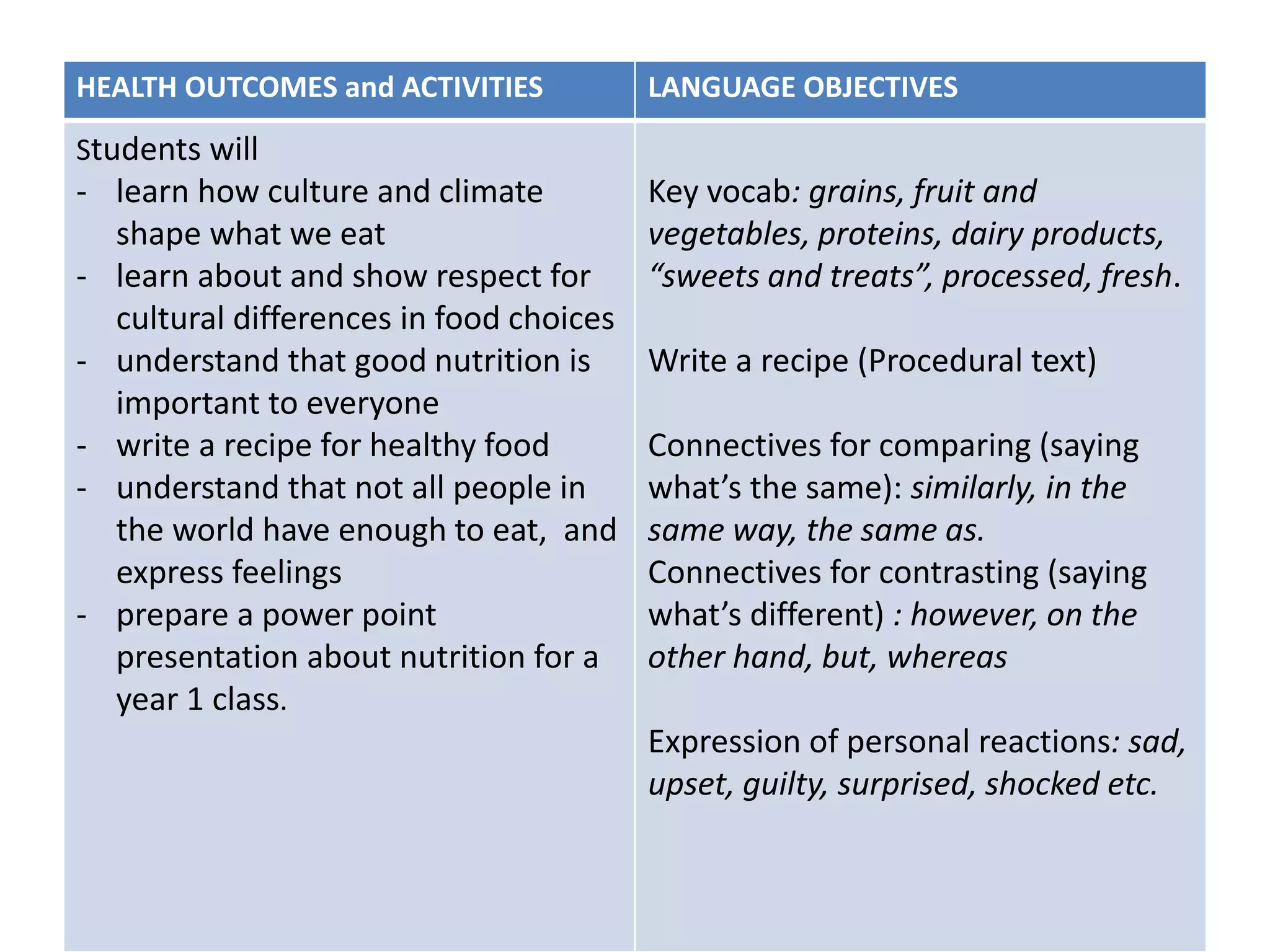
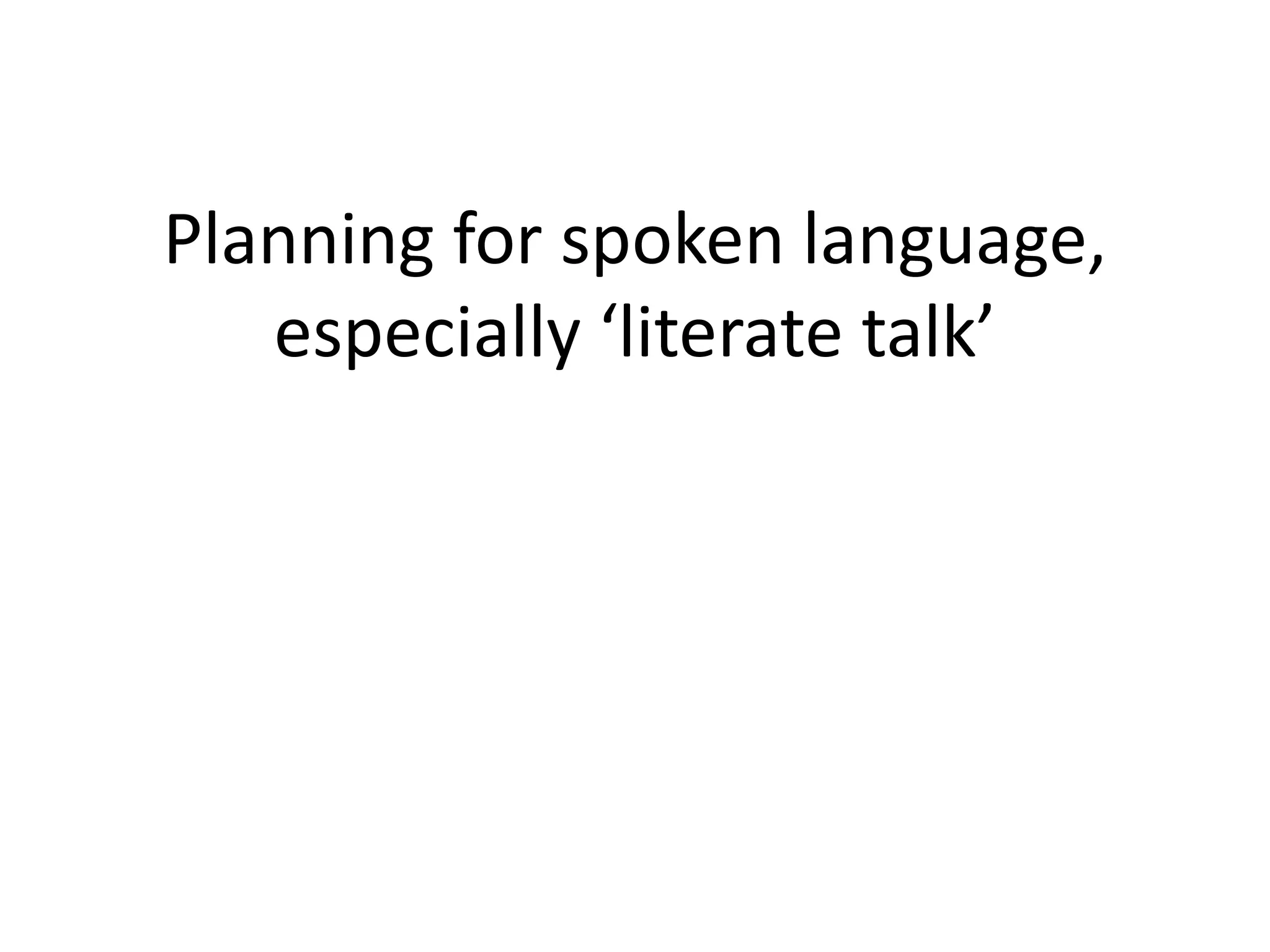
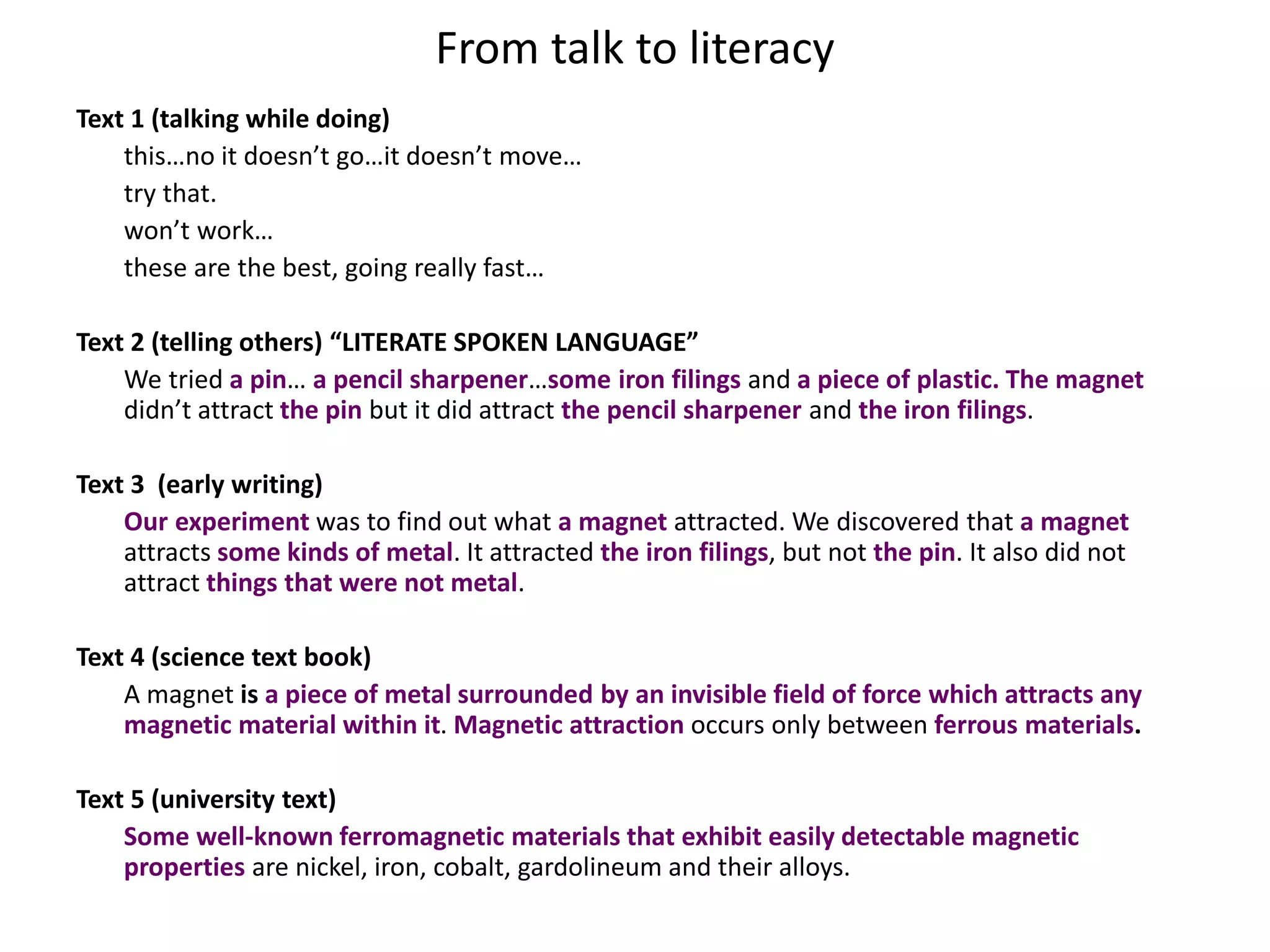

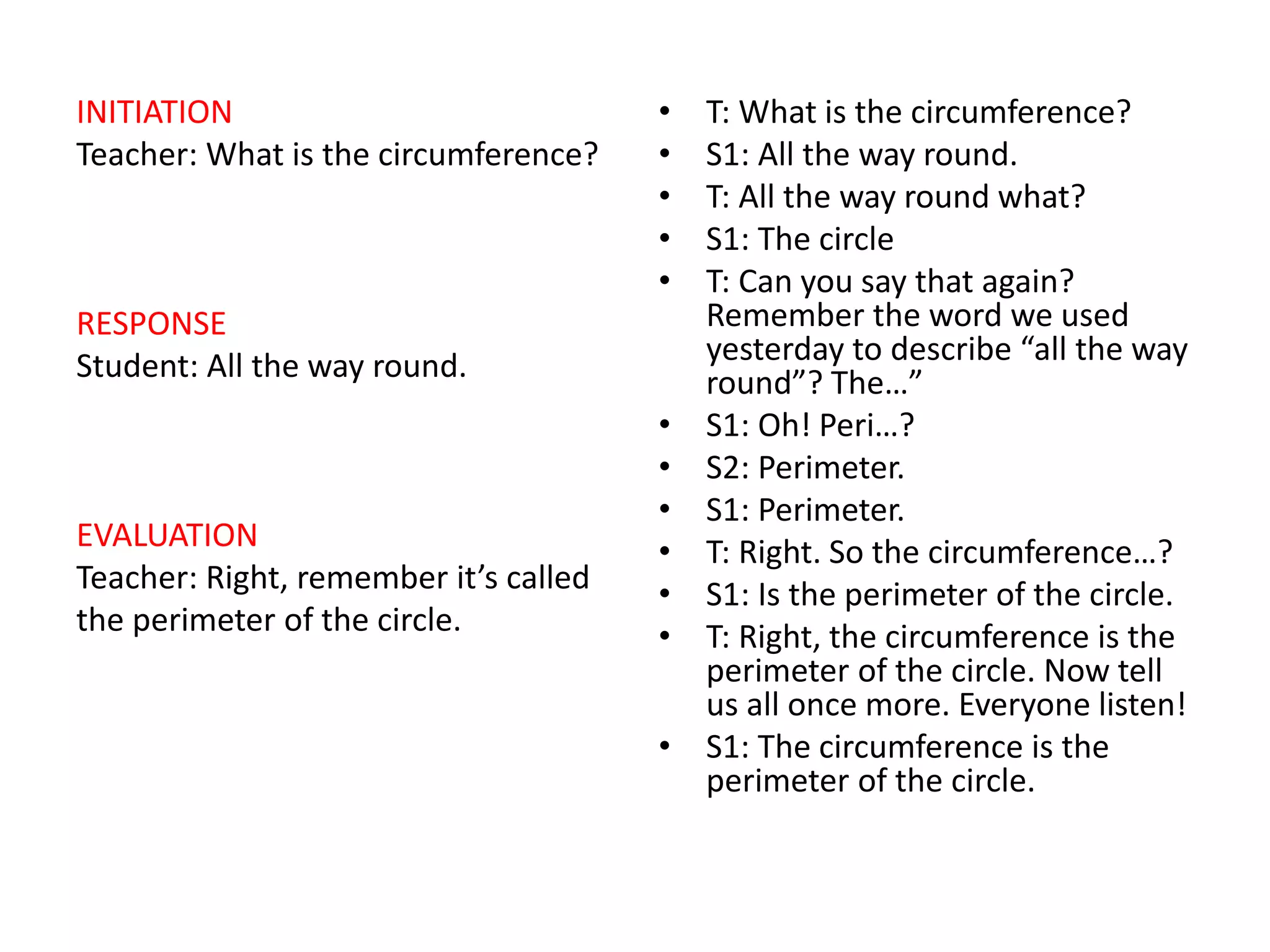
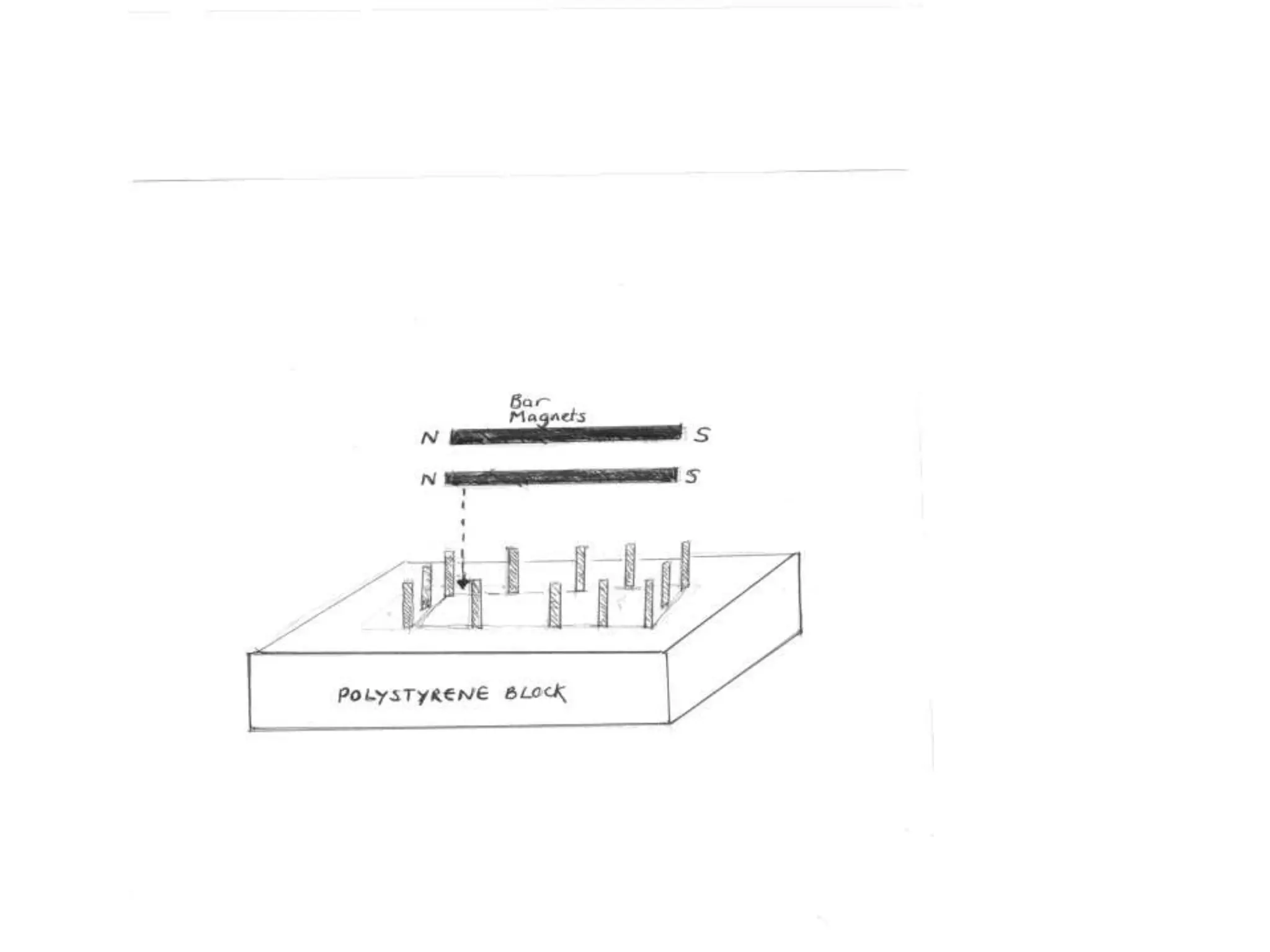
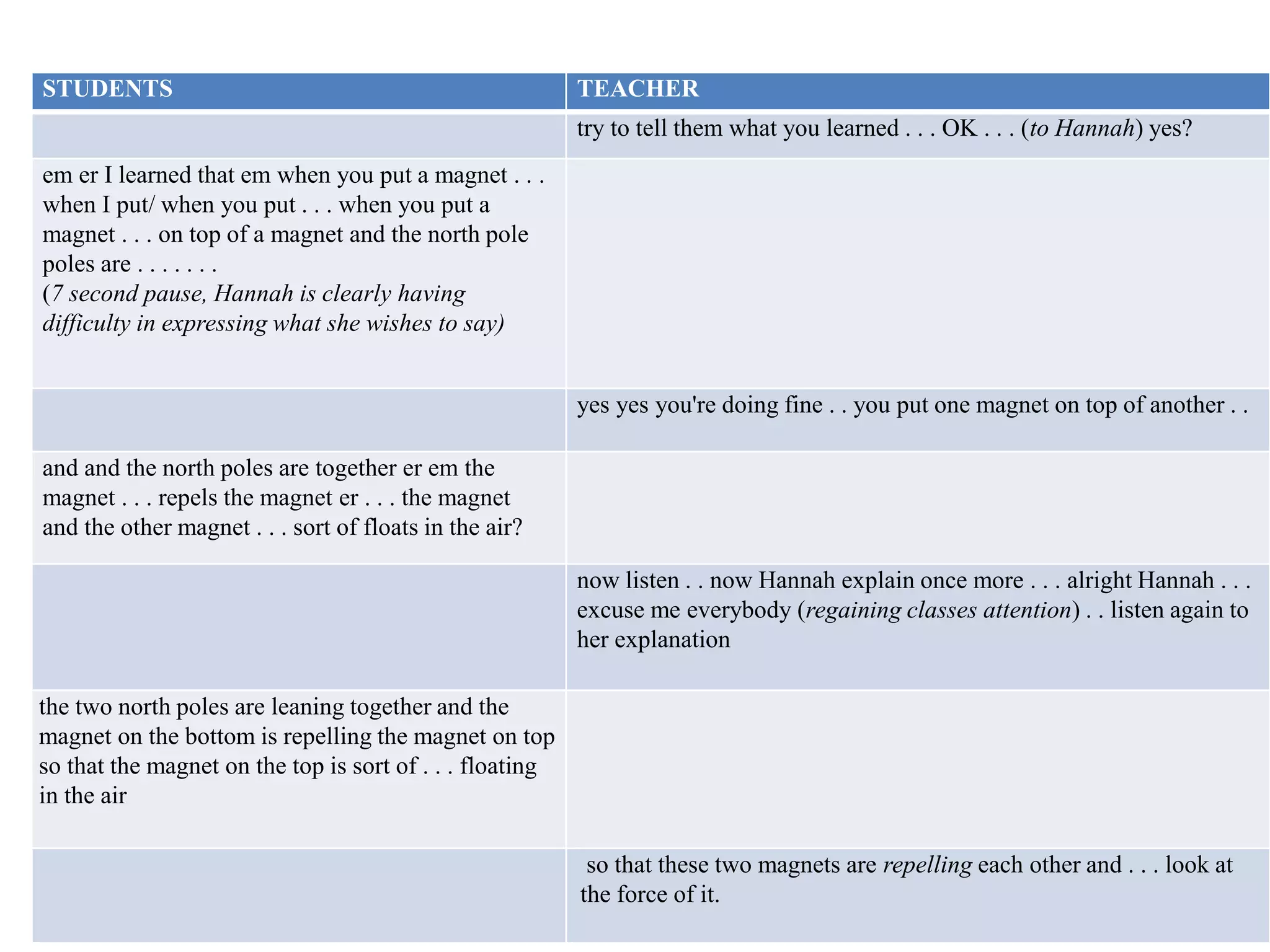

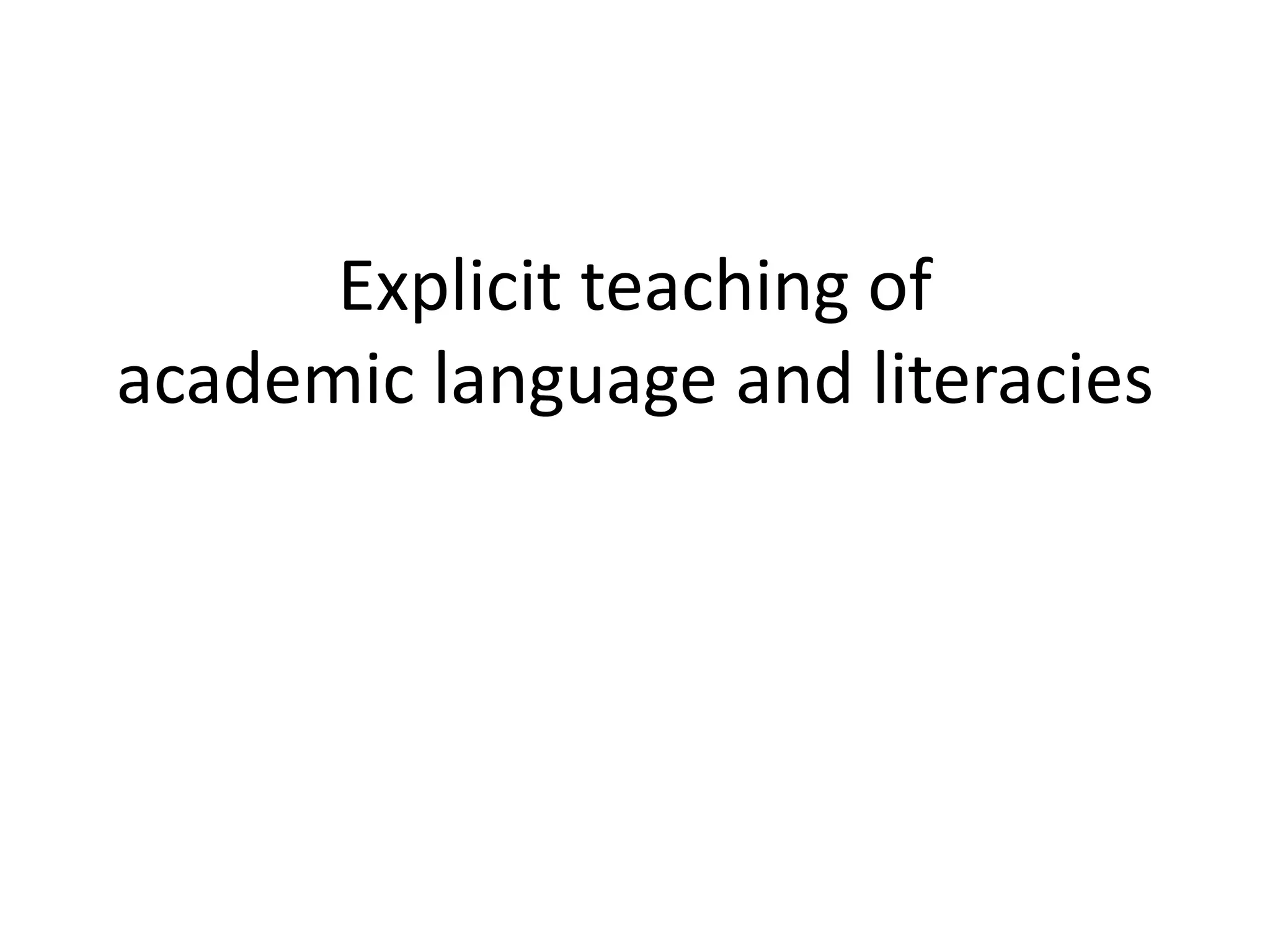
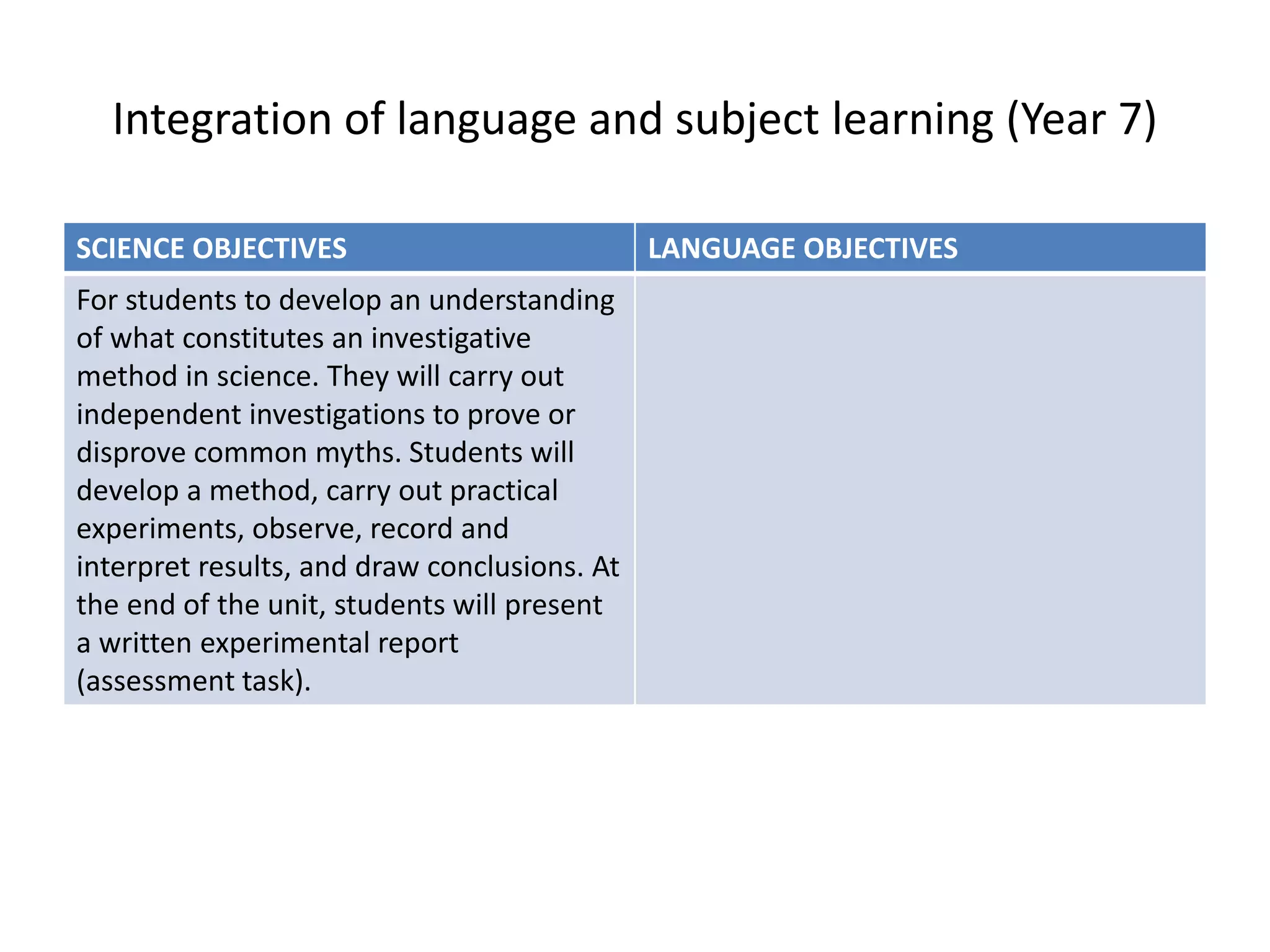
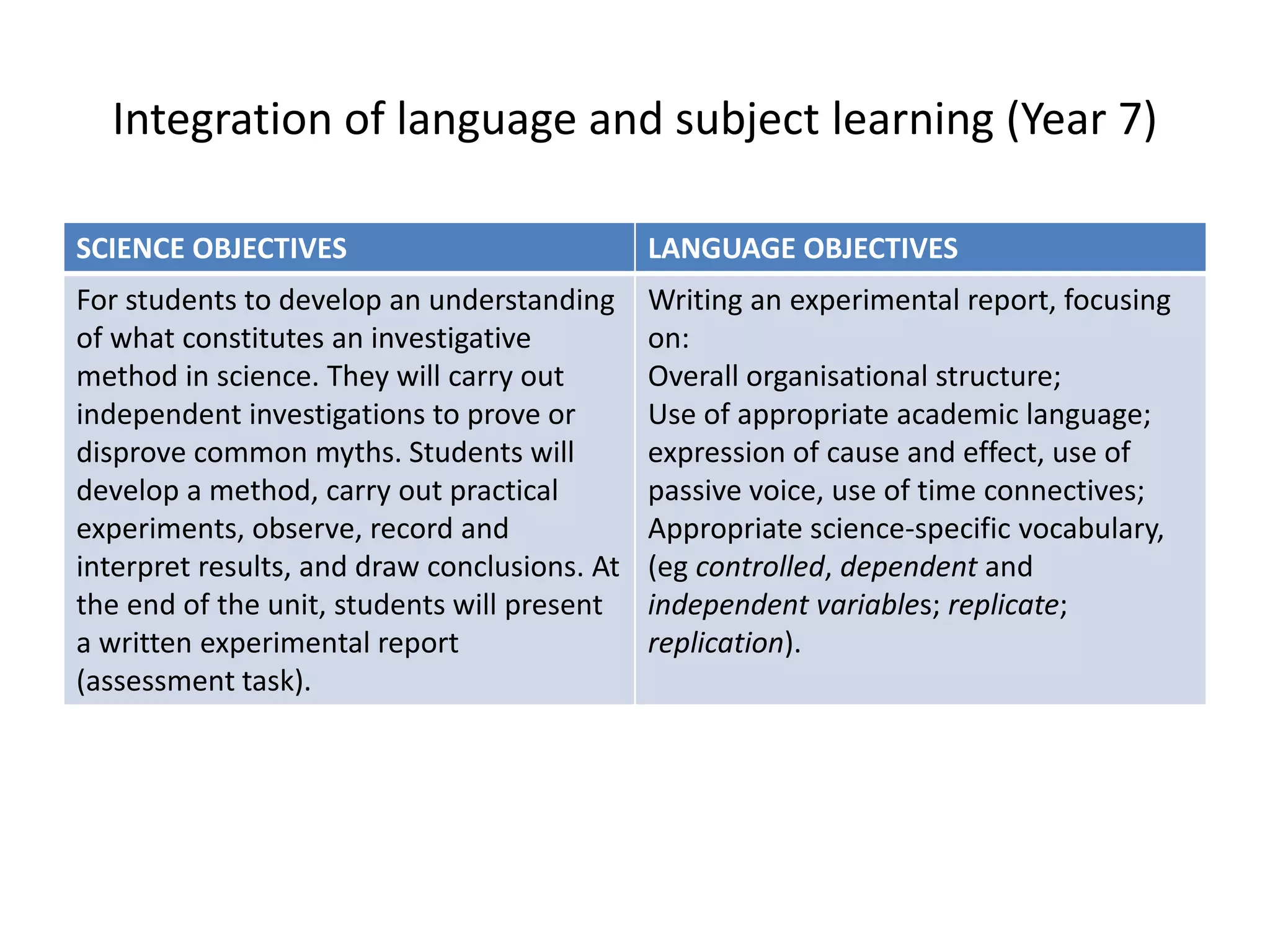
![Appropriating and Recasting: Mode shifting
Students Teacher
they have to do it [the experiment] many times so they
can see if there are any changes.
yes so they can see if they get similar results. yes so
they can see if they get similar results
and see if the myth is busted. It wasn’t getting busted
but then they kept doing it until it got busted.
so they did the experiment many times. Your
experimental method should be repeated a number
of times too…so that a more accurate conclusion can
be made. This is called replicating the experiment. ….
OK so they repeated their experiments many times.
they kept on doing it.
they kept on doing it. And this is what you have to do
as well in your experiments. You have to replicate the
experiment, you’re going to repeat it several times,
replicate it.So replication is very important. And why
is replication important? ? So that we get…?
an accurate …more accurate results](https://image.slidesharecdn.com/paulinegibbonssymposium2015-151028124859-lva1-app6892/75/What-Counts-as-Scaffolding-Implications-for-Language-Teaching-and-Learning-23-2048.jpg)
